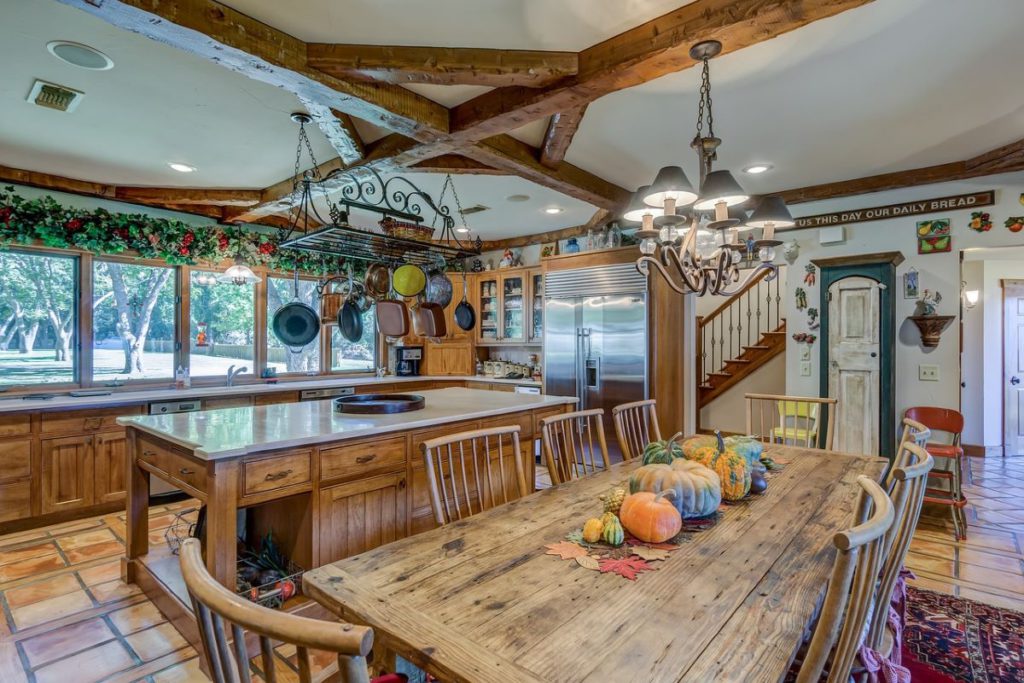When we think of interior design, we often focus on elements like furniture, colour schemes, and flooring. However, one of the most overlooked aspects of interior design is the ceiling. Ceilings are often treated as an afterthought, painted white and forgotten about. But in reality, ceiling designs have the power to transform rooms in ways that are both visually stunning and functionally advantageous. Here, we will explore how ceiling designs can completely change the look and feel of a room.
Creating Visual Interest
Ceilings provide an often-untapped canvas for adding visual interest to a space. A well-designed ceiling can draw the eye upward, creating a sense of verticality and spaciousness. Intricate patterns, coffered ceilings, or even a simple coat of paint in a bold colour can make a room feel more dynamic and visually appealing.
For example, a room with a high, vaulted ceiling can evoke a sense of grandeur and airiness. Alternatively, a room with a lower ceiling can be made to feel cosier and more intimate with the right design elements. By using different materials, textures, and finishes, designers can create ceilings that become the focal point of a room, turning an otherwise plain space into a work of art.
Enhancing Acoustics

Ceilings can also play a crucial role in enhancing the acoustics of a room. This is especially important in spaces like home theatres, recording studios, and restaurants, where sound quality is essential.
Acoustic ceiling tiles, suspended baffles, or strategically placed sound-absorbing panels can improve sound clarity and reduce noise levels. In open-plan living areas, where conversations, TV watching, and kitchen activities coexist, a well-designed ceiling can help create distinct zones by controlling sound reflection and absorption.
Incorporating Lighting Solutions
Ceilings are an ideal location for incorporating lighting solutions that can completely transform a room’s atmosphere. From elegant chandeliers and pendant lights to recessed lighting and cove lighting, the options are endless.
By carefully selecting and positioning lighting fixtures, you can highlight architectural details, create focal points, or simply set the mood. For instance, a bedroom with a soft, backlit cove ceiling can create a serene and relaxing ambience, while a dining room with a statement chandelier can add a luxurious feel to the space.
Defining Zones and Functions
In open-concept living spaces, ceiling designs can be used to define different zones and functions within the same room. By varying ceiling heights or using different materials, you can visually separate the kitchen from the dining area or the living room from the home office. This not only adds a sense of organisation to the space but also allows for more efficient use of each area.
For example, a dropped ceiling with pendant lights can delineate the dining area in a kitchen-dining combo, making it feel like a separate dining room. Similarly, a raised ceiling with exposed beams in the living room area can create a cosy, intimate atmosphere within a larger space.
Adding Personality and Style
Ceiling designs provide an opportunity to infuse personality and style into a room. You can achieve this by incorporating unique suspended ceiling features that catch the eye. One option is to consider suspended ceiling tiles with intricate patterns or textures, adding a touch of elegance and individuality to your space. These tiles can serve as a canvas for creativity, allowing you to customise your room’s ambience and make it a true reflection of your personal style. Whether you are going for a minimalist, contemporary look or a more ornate and traditional aesthetic, suspended ceilings offer a versatile platform for expressing your unique taste and flair.
Connecting with the Outdoors
In spaces with access to outdoor areas, such as patios, verandas, or balconies, ceiling designs can help to connectindoor and outdoor living areas. Sliding glass doors that lead to outdoor spaces can be complemented by a continuation of the ceiling design, blurring the lines between inside and outside.
This not only enhances the visual flow but also allows for a more immersive and enjoyable living experience. A well-designed outdoor ceiling can provide shelter from the elements while maintaining a sense of openness and connection with nature.
Energy Efficiency and Sustainability
Ceiling designs can also play a role in energy efficiency and sustainability. By incorporating eco-friendly materials and energy-efficient lighting solutions, your home can reduce its negative impact on the environment.
For instance, choosing a white or reflective ceiling finish can help bounce natural light deeper into a room, reducing the need for artificial lighting during the day. The installation of solar panels or skylights in the ceiling can also harness the power of the sun, further decreasing energy consumption and utility costs.
All in all, ceiling designs are a critical but often overlooked aspect of interior design. They have the power to transform rooms in numerous ways, from creating visual interest and enhancing acoustics to defining zones, adding personality, and improving energy efficiency. Whether you’re designing a residential space or a commercial one, considering the potential of your ceilings can lead to more aesthetically pleasing, functional, and comfortable environments. So, the next time you’re planning an interior design project, remember to look up and explore the endless possibilities that ceiling designs offer.

